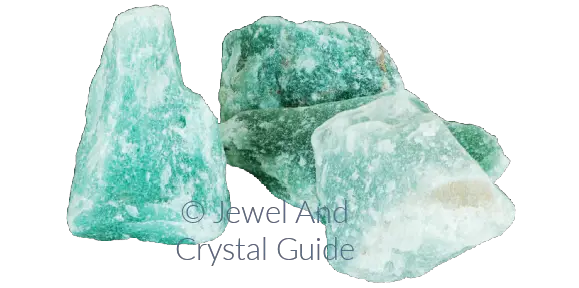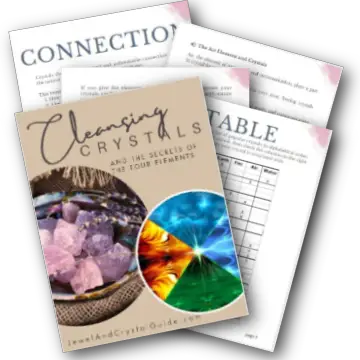
What is aventurine
Aventurine is a quartz crystal that’s known for its unique shimmering effect, called aventurescence. This shimmering effect is caused by mica inside the crystal.
How to say aventurine
The word “aventurine” is pronounced as “av-en-chuh-reen.” Here’s a breakdown of the syllables:
1. “av” – pronounced like “av” in “aviation”
2. “en” – pronounced like “en” in “end”
3. “chuh” – pronounced like “chuh” in “church”
4. “reen” – pronounced like “reen” in “green”
What aventurine is good for
Aventurine is good for boosting confidence, bringing good luck and good fortune, healing the emotions, relieving stress, finding inner peace, improving self-love and love for others, uplifting the spirit, and much more.
Here’s a full list of everything aventurine is good for.
Use a cleansed and charged aventurine during meditation to ask the crystal to bring you what you need. Here’s a simple aventurine meditation you can follow to get you started.
Other names for aventurine
Aventurine is usually just called aventurine, but here are some other names you might come across:
1. Sunstone: In some cases, a reddish-brown variety of aventurine with a metallic shimmer is referred to as sunstone. Sunstone is often associated with warm, sunny energies and is considered a type of aventurine.
2. Indian Jade: Aventurine is sometimes marketed or referred to as “Indian Jade” because of its green color and semi-translucent appearance. It’s important to note that aventurine is not actually jade, which is a different mineral.
Colors of aventurine
Here are some colors that aventurine comes in:
1. Green Aventurine
2. Blue Aventurine
3. Red Aventurine
4. Brown Aventurine
5. Yellow Aventurine
6. Peach or Orange Aventurine
Aventurine versus other crystals
The difference between aventurine and jade
Aventurine and jade are two different minerals, although they share some similarities in appearance and are often used in similar ways.
Aventurine is quartz crystal, while jade is one of two different minerals: jadeite and nephrite.
Aventurine comes in different colors, including green, blue, red, brown, and yellow, with green being the most common.
Jadeite comes in a wider range of colors, including green, lavender, white, yellow, and even rare colors like blue and black. Nephrite is typically found in shades of green, white, and gray, although it can also occur in other colors.
The difference between aventurine and amazonite
Aventurine and amazonite are different minerals with distinct characteristics.
Aventurine is a type of quartz crystal, while amazonite is a type of feldspar gemstone. Feldspar is a group of minerals found in rocks.
Aventurine comes in different colors, including green, blue, red, brown, and yellow, with green being the most common. But amazonite is known for its distinctive blue-green color, ranging from pale green to bright turquoise shades.
The difference between aventurine and fluorite
Aventurine and fluorite are not the same thing.
Aventurine is quartz crystal, while fluorite is a calcium fluoride crystal.
Aventurine comes in different colors, including green, blue, red, brown, and yellow. Green is the most common color of aventurine.
Fluorite also comes in a range of colors, but these are purple, green, blue, yellow, pink, brown, black, and clear. Sometimes fluorite has several colors in one crystal and is called rainbow fluorite.

The difference between aventurine and emerald
Aventurine and emerald are very different.
Aventurine is a common variety of quartz crystal, while emerald is a precious gemstone belonging to the beryl mineral family.
Aventurine occurs in various colors. It’s usually green, but it can also be blue, red, brown, and yellow. Emerald is always a rich, vibrant green color.
Emerald is one of the most sought-after gemstones, particularly for its intense green color and exceptional clarity. Aventurine is more readily available and is much more affordable than emerald.
The difference between aventurine and chalcedony
Aventurine is a quartz crystal, while chalcedony is a broad term that includes several types of microcrystalline quartz. Microcrystalline quartz is a group of quartz varieties with a fine-grained, microscopically small crystal structure
Both come in various colors: Aventurine in green, blue, red, brown, and yellow, with green being the most common. Chalcedony in white, gray, brown, blue, purple, pink, and more.
Aventurine often has a granular or coarse texture because of mineral inclusions in the crystal, such as mica (which is what makes it shimmer). Chalcedony often has a smooth and waxy appearance.
Is aventurine expensive?
Aventurine is an affordable crystal. Its price depends on factors such as quality, color, size, and cut, but compared to other crystals, aventurine is often very accessible and budget-friendly.
Aventurine is not rare, but some rare colors or high-quality specimens with exceptional clarity or shimmer may be priced higher than more common green aventurine.
Here is a table with the average price ranges of aventurine per gram:
| Quality of Aventurine | Price Range (USD) |
| Low-grade aventurine | $0.10 – $1 per gram |
| Medium-grade aventurine | $1 – $5 per gram |
| High-grade aventurine | $5 – $20 per gram |
Where to keep aventurine
Keep aventurine on you, either in a pocket or in jewelry; in a meditation area, altar or sacred space; and in your garden or near potted plants. Always choose a place that resonates with you and your intentions.
Here are the 26 best places to keep aventurine and why.
How to cleanse and charge aventurine
Aventurine can be cleansed and charged in nature, using earth, fire, or wind. Put the crystal in healthy soil, the smoke of a burning smudge or incense stick, or your own breath to purify and revitalize it.
Here’s a list with instructions on all the ways to safely cleanse and charge aventurine
Once you’ve cleansed and charged aventurine, it’s good to use affirmations to ask the crystal for what you need.
How to tell if aventurine is real
We use the Mohs scale to determine how hard or soft something is.
Aventurine is a 7 out of 10 on the Mohs scale, which means aventurine is quite hard.
This gives us one way to test if aventurine is real or not: If the crystal cannot be scratched by steel (5.5 on the Mohs scale, so softer) but can be scratched with a masonry drill bit (8.5 on the Mohs scale, so harder), it’s likely to be real aventurine or at least real quartz.
Click here for a list of methods and tests to tell if aventurine is real or not.
Who should wear aventurine
While anyone can wear aventurine, Aries, Taurus, and Virgo are believed to benefit most from this crystal because of their astrological properties and what aventurine brings.











